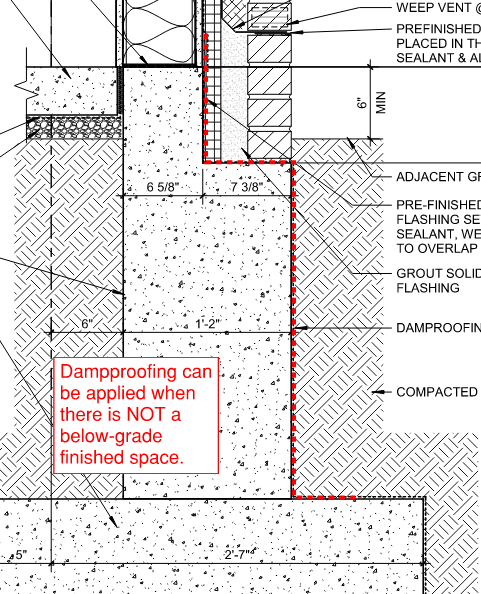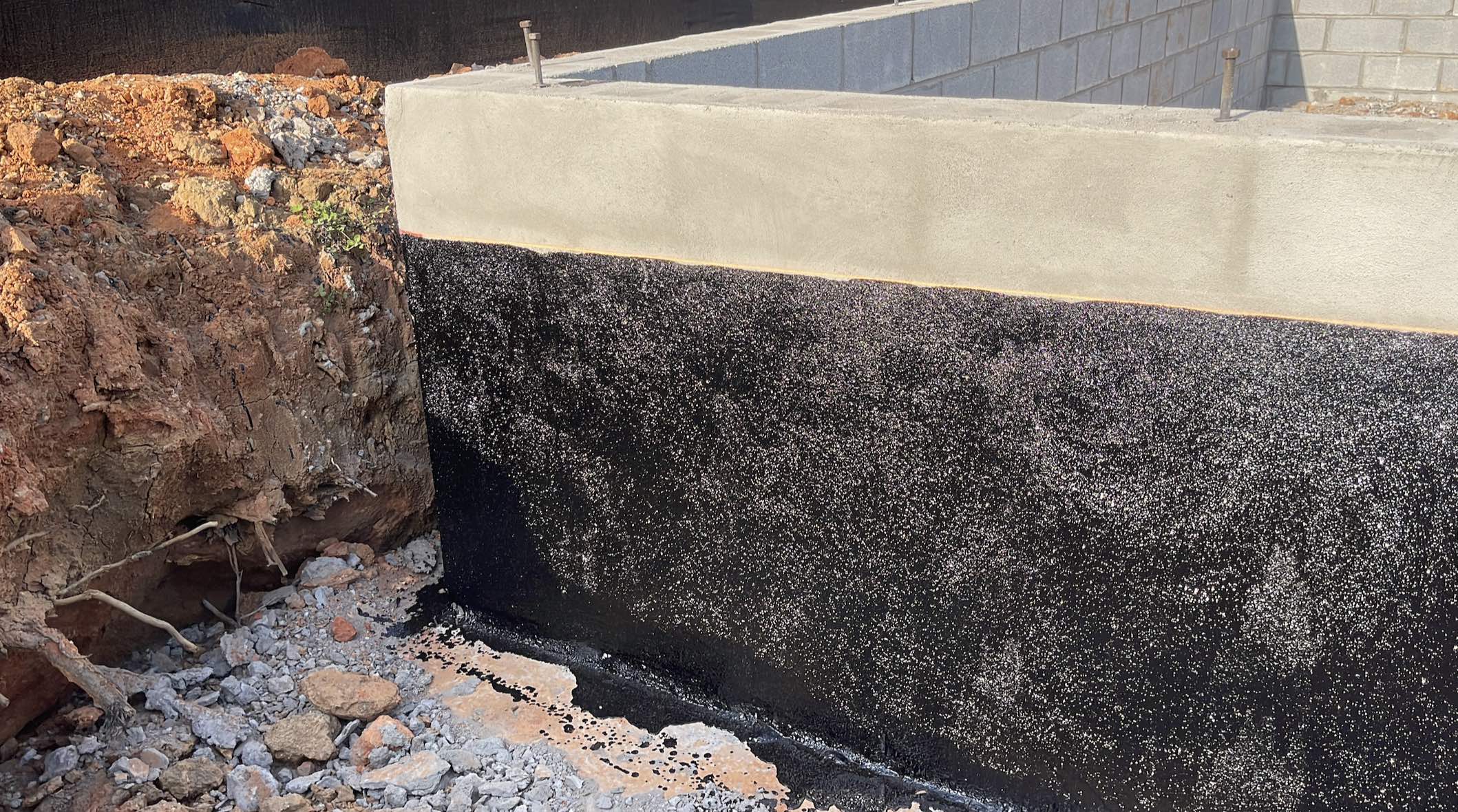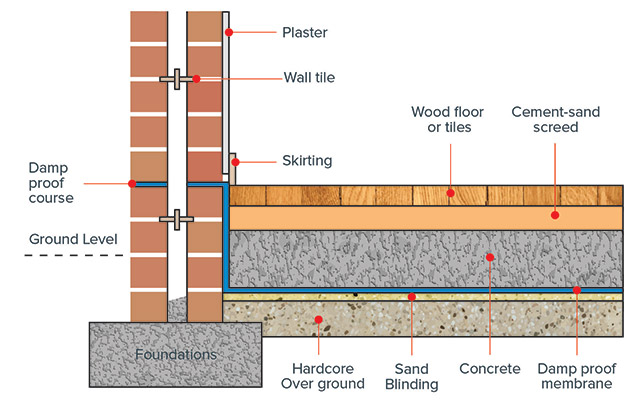Is it time for a professional water damage check? Find out with damp proofing newcastle
Is it time for a professional water damage check? Find out with damp proofing newcastle
Blog Article
Checking Out the Numerous Strategies and Solutions for Effective Damp Proofing
Wetness in buildings presents significant challenges to both architectural integrity and indoor air top quality. Numerous strategies and services have emerged to battle this prevalent problem. From traditional damp-proof membrane layers to innovative chemical treatments, each method offers one-of-a-kind advantages. Understanding these alternatives is necessary for efficient dampness control. Choosing the appropriate solution depends on certain building conditions and needs, triggering more expedition into the most efficient damp proofing approaches available.
Comprehending the Reasons of Dampness
Wetness can occur from various sources, understanding these causes is crucial for effective removal. Frequently, moisture originates from 3 key sources: climbing damp, penetrating wet, and condensation. Rising damp takes place when groundwater takes a trip up-wards with porous products, such as brick or stone, usually because of an absence of an efficient barrier (mould removal newcastle). Passing through moist is usually brought on by outside variables, consisting of roof leaks, malfunctioning gutters, or damaged wall surfaces, enabling water to infiltrate a home. Condensation, on the various other hand, results from excess wetness airborne, often intensified by inadequate air flow and temperature level differences, causing water droplets basing on surfaces. Identifying these underlying problems is essential, as each kind of dampness needs a tailored approach for remediation. Correct assessment helps in determining the most reliable options, ultimately securing the structural integrity of a building and improving interior air quality
Typical Damp-Proof Membranes

Chemical Damp-Proofing Solutions
Chemical damp-proofing services offer an ingenious technique to stop moisture breach in buildings. These methods generally include the application of liquid chemicals that pass through stonework and form an obstacle versus rising wet. Generally used chemicals consist of silanes, siloxanes, and various other water-repellent agents that react with surface products to produce a hydrophobic layer.The application procedure normally needs exploration holes into the wall surfaces, injecting the chemical option, and allowing it to heal. This method is particularly beneficial for older frameworks where traditional damp-proof membranes may be impractical. Chemical damp-proofing can be much less disruptive and extra affordable than extensive remodelling projects.While efficient, these options depend on proper application and environmental problems for peak performance. damp specialist newcastle. Regular maintenance and tracking are necessary to assure the durability of the damp-proofing therapy. In general, chemical damp-proofing stands for a functional option for safeguarding structures versus moisture-related damage
Tooth Cavity Wall Surface Building And Construction Strategies
Tooth cavity wall surface building methods use countless advantages, specifically in wetness control and power efficiency. By including an air space between two layers of stonework, these wall surfaces efficiently minimize water access while boosting insulation. This combination not just secures structures from moisture but also adds to reduced power usage.
Benefits of Cavity Wall Surfaces
When taking into consideration effective moist proofing methods, the advantages of cavity walls stand out plainly. Cavity walls include 2 separate layers, creating an air gap that successfully decreases moisture penetration. This design minimizes the risk of wetness, as the external wall serves as a barrier versus rain and water ingress. In addition, cavity wall surfaces improve thermal insulation, which adds to power effectiveness by lowering heat loss. They also supply sound insulation, assisting to create a quieter indoor environment. Moreover, the air space enables air flow, which assists in moisture control and reduces the likelihood of mold and mildew development. These benefits not just improve the total comfort of a structure however additionally add to its long life and structural stability.
Dampness Control Strategies
Reliable dampness control methods are critical in dental caries wall building and construction to assure long-term protection versus moisture. One primary method entails the consolidation of weep holes, which promote water drainage from the dental caries, avoiding buildup. In addition, the use of breathable membrane layers can aid manage wetness degrees while enabling caught vapor to escape. Appropriate positioning of insulation is also vital, as it should not block drainage paths. Moreover, guaranteeing that the outer leaves of the tooth cavity wall are created with waterproof materials improves general sturdiness. Normal upkeep checks are necessary to determine any type of obstructions or damages early, safeguarding the framework's integrity. Ultimately, a mix of these methods creates a durable protection against moisture invasion in cavity wall surfaces.
Insulation and Power Performance
Insulation plays a vital function in enhancing power performance within tooth cavity wall construction. By integrating insulating products, these wall surfaces produce a thermal obstacle that reduces heat loss and decreases power intake. Effective insulation not only helps keep a steady indoor temperature level but additionally minimizes the risk of moisture, as it protects against condensation within the wall dental caries. Different techniques, such as making use of rigid foam boards or mineral woollen, can be utilized to accomplish ideal insulation efficiency. Furthermore, correct setup is important to guarantee that spaces and voids are decreased, which can or else endanger power efficiency. Inevitably, a well-insulated cavity wall surface adds greatly to overall sustainability and decreases cooling and heating costs for homeowners.
External Damp Proofing Techniques
Exterior moist proofing techniques are essential for securing frameworks from wetness infiltration. Two efficient strategies consist of the application of water-proof membrane layers and the installment of French drains pipes. These options aid reduce water buildup and preserve the stability of structures.
Waterproof Membrane Application
While different methods exist for avoiding dampness ingress, the application of water resistant membranes continues to be a highly efficient exterior wet proofing strategy. These membrane layers are generally made from materials such as polyethylene, rubber, or modified asphalt, providing a durable barrier against water penetration. The installation procedure entails using the membrane layer to the external surfaces of walls or foundations, making sure complete protection to avoid leaks. Correct attachment and securing at joints are essential to making the most of efficiency. Water-proof membrane layers can be used in different forms, including liquid coverings and sheet membrane layers, permitting versatility based upon the particular needs of the structure. This technique not just secures buildings from dampness however also enhances their long life and structural integrity.
French Drainpipe Setup
One efficient method for handling groundwater and preventing dampness accumulation around a building's foundation is the installation of a French drainpipe. This water drainage system includes a trench loaded with gravel and a perforated pipe that redirects surface area water away from the foundation. Proper setup calls for cautious preparation, guaranteeing that the drain slopes far from the framework to help with excellent water flow. In addition, the location of the drainpipe is essential; it ought to be placed in locations susceptible to merging or excess wetness. Routine upkeep, including clearing particles from the gravel and ensuring the pipeline continues to be unobstructed, is necessary for lasting effectiveness. Inevitably, a well-installed French drainpipe can considerably decrease the danger of water-related issues in structures and cellars.
Inside Waterproofing Techniques
Inside waterproofing techniques are essential for safeguarding a building's interior from dampness seepage and potential water damages. These approaches usually entail the application of customized products and techniques made to create a moisture barrier within the framework. One typical approach is making use of water-proof coverings or sealants on walls and floors, which avoid wetness from permeating surfaces.Additionally, setting up interior drain systems, such as sump pumps, can efficiently manage water build-up in cellars and crawl areas. Another method involves making use of vapor barriers, which are mounted to hinder wetness activity from the ground right into living spaces.Moreover, addressing any type of splits or voids in walls or structures with ideal sealers guarantees a detailed protection versus water breach. By implementing these interior waterproofing strategies, property proprietors can substantially decrease the danger of mold and mildew growth, structural damages, and other moisture-related concerns. Appropriate implementation of these techniques is important for lasting defense and structure honesty.
Routine Maintenance and Inspection Practices
Regular maintenance and evaluation practices are essential for ensuring the long-lasting efficiency of wet proofing options in any kind of structure. Routine checks allow home proprietors to recognize very early signs of moisture intrusion, such as peeling paint, mold growth, and mildewy smells. These indicators can signify underlying problems that need immediate attention.Inspections need to be conducted at least every year, focusing on susceptible areas like cellars, crawl spaces, and outside walls. During these assessments, residential or commercial property owners need to take a look at sealers, drain systems, and air flow to confirm they function correctly.Additionally, maintaining rain gutters and downspouts is important, as clogged up systems can lead to water accumulation near the foundation. Applying a normal maintenance routine, along with prompt repairs, can substantially expand the life expectancy of wet proofing measures and safeguard the structural integrity of the structure. Aggressive steps inevitably add to the general health and wellness of the living environment.
Frequently Asked Inquiries
How Much Time Does Damp Proofing Usually Last?
The duration of moist proofing performance varies, generally lasting in between 20 to half a century. Aspects such as application top quality, ecological problems, and maintenance practices greatly affect the longevity of the wet proofing therapy.

Can I Damp Proof My Home Myself?
The private pondered the usefulness of do it yourself damp proofing. With proper research and the best materials, it is feasible. They likewise recognized the significance of expert guidance to assure resilient effectiveness and prevent future problems.
What Are the Indicators of Inefficient Damp Proofing?
Indications of ineffective get more info wet proofing consist of persistent mildewy smells, visible mold development, peeling off paint, damp patches on walls, and timber decay - mould treatment newcastle. Home owners ought to deal with these problems quickly to avoid more damages and wellness issues
Does Damp Proofing Affect Indoor Air High Quality?

Just How Much Does Specialist Damp Proofing Expense?
Professional damp proofing expenses vary considerably, typically ranging from $1,000 to $5,000 depending upon the building's dimension, the extent of the moist problem, and picked techniques. Each scenario calls for a customized assessment for precise prices. Frequently, wetness originates from three main sources: rising wet, passing through moist, and condensation. When considering efficient damp proofing techniques, the benefits of dental caries walls stand out plainly. Outside damp proofing techniques are necessary for protecting frameworks from dampness infiltration. While different methods exist for preventing dampness access, the application of waterproof membrane layers stays a highly efficient outside wet proofing method. Indicators of inadequate damp proofing consist of relentless mildewy smells, visible mold development, peeling paint, wet patches on wall surfaces, and wood decay.
Report this page